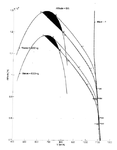Velius
Airman 1st Class
An interesting article...
Mach 1 - Who was really the first
According to this article, Hans Guido Mutke claims to have reached Mach 1 during a dive in his Me-262. I started to wonder if any other WWII plane might have been capable of meeting this speed in a dive, particularly the Me-163. I've even read an on-line article (which I can't find at the moment) that the Bachem 349 might have inadvertently broke the sound barrier during it's first manned flight. Could any propellor aircraft reach Mach 1 in a dive?
Any comments or thoughts about this? Thanks ya'll! 8)
Mach 1 - Who was really the first
According to this article, Hans Guido Mutke claims to have reached Mach 1 during a dive in his Me-262. I started to wonder if any other WWII plane might have been capable of meeting this speed in a dive, particularly the Me-163. I've even read an on-line article (which I can't find at the moment) that the Bachem 349 might have inadvertently broke the sound barrier during it's first manned flight. Could any propellor aircraft reach Mach 1 in a dive?
Any comments or thoughts about this? Thanks ya'll! 8)

